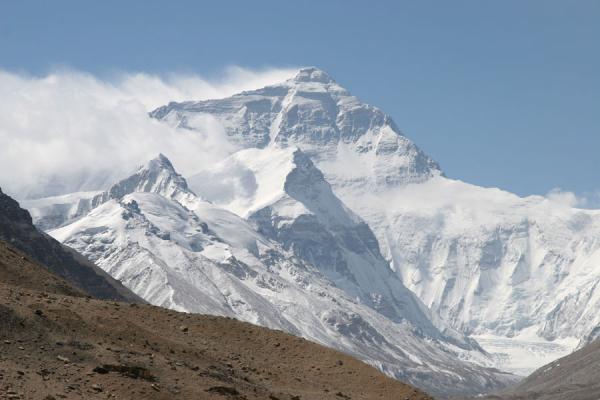
For most armchair mountaineers, Everest is the ultimate peak. Located in the heart of the Himalaya, the tallest mountain on the planet may be well traveled these days, but its lure is undeniable, as evidenced by all the attention it gets each year during the spring climbing season.
Most Everest fans know that there are multiple routes to the summit, with the vast majority of climbers making the approach from the South or North sides. But those two routes are vastly different from one another, and the experience in climbing them is quite unique. Who better to explain those differences than Alan Arnette, a man who has been to the mountain on several occasions, and covers the climbing season exhaustively each year.
On his Everest 2010 blog, Alan has posted a great article that spells out the differences between the two most commonly climbed routes. He explains the positives of climbing from each side, and lays out the concerns as well, before breaking down the stages to reaching the summit in detail, and pointing out the important landmarks along the way.
For instance, on the South Col route, which is on the Nepali side of the mountain, Alan notes that it the trek to BC is beautiful and local villages are a great place to acclimatize before going up the mountain. But he points out that the Khumbu Icefall must be negotiated from that side of the mountain. In contrast, the Northeast Ridge route, on the Tibetan side, is less crowded and allows you to drive to base camp, but it is generally windier and colder as well, and requires a longer summit night to be successful.
Looking at the routes in detail, Alan tells us about each stage of the climb, and how long it should take to get there. For instance, on the South side, the climb from BC to Camp 1 requires roughly 4-6 hours, but is also the most dangerous part of the route, as the mountaineers have to cross the Icefalls. He also notes the locations of such famous landmarks as the Yellow Band, the Balcony, and the Hillary Step. The same detailed look is applied to the North side, where we garner information not only on the various camps on that side of the mountain, but also the First and Second Steps, the Summit Pyramid, and so on.
With the season set to get underway soon, this article serves as a nice primer for those who will be following the teams in the next few months. And for those of us for which this is kind of old hat, it’s a nice reminder of the challenges the mountaineers have to overcome to stand on the summit of Everest.
- Gear Review: The Xero Scrambler Mid is an Ultralight Hiking Shoe for Spring - March 1, 2023
- Gear Review: Yeti Roadie 48 Wheeled Cooler - August 18, 2022
- Kristin Harila Continues Pursuit of 8000-Meter Speed Record - August 16, 2022
Comments are closed.